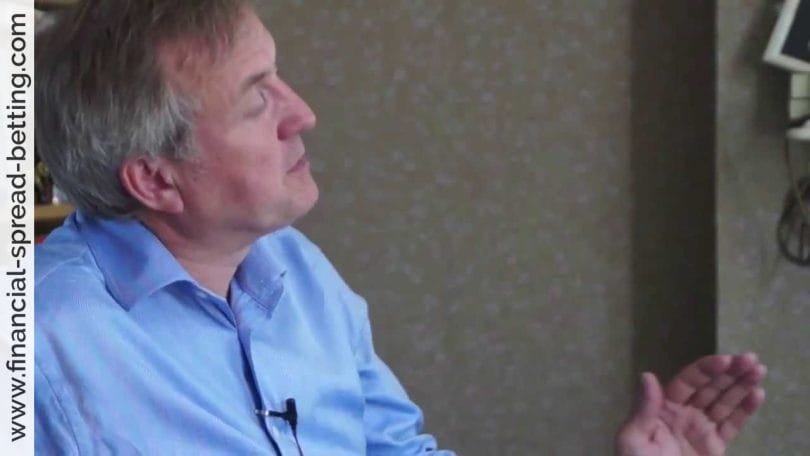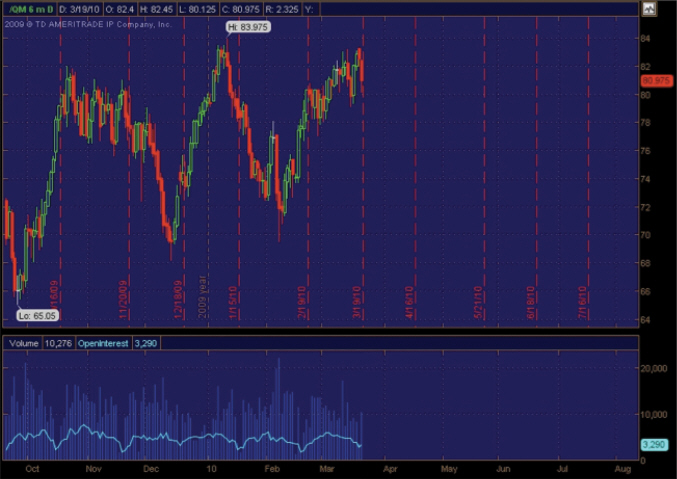Open Interest
You should remember from Module 1 that open interest is another type of trading volume. It is used for futures contracts, and is a count of all the outstanding futures contracts that are out there. It is simply defined as a count of the total number of long positions, or of short positions. It is not the sum of these, because for every long position there must be a short position, so if you added them together you would be doubling the number of contracts.
Note also that it is different to the contract volume traded on any particular day, and somewhat unrelated. Open interest is a running total of contracts that exist, no matter when they were taken out.
When futures are traded, the contract may be a new one, which would add to the open interest, or the trades may include traders liquidating their open positions, which would have the effect of reducing the open interest that is outstanding. In fact, one trader might be opening a position, and the trader on the other side is closing his position, so open interest would not change. Just from seeing the number of futures contracts traded on any day, you can’t really say what effect they have on the open interest. All you can know is that open interest cannot increase or decrease by more than the number of contracts traded, even if the transactions were all of one type.
Working with Volume and Open Interest
This also means in practical terms that the futures trader does not have to specify whether he is opening or closing a position, it is up to the brokerage firm to work that out. It lets the trader switch from a long position to a short position with just one trade, for example if you were long with five contracts, but wanted to be short three contracts, you would simply need to short a total of 8 contracts which would have the effect of closing the five and opening the three short positions. If you wanted to do the same thing with stocks and shares, you would have to place two separate orders, one to close your open position and the other to make a new position in the opposite direction.
The open interest is usually shown as a line, underneath the price chart and often included with the volume bar chart. Because of the expiring nature of futures contracts, you will normally see the open interest steadily increasing and then declining over time, as the expiration date approaches. Here’s a chart which shows that.
Open interest is taken as an indication of the liquidity of a contract, which means how easy it is to trade. If there are many people involved in trading the futures contract, then it will be simple to open or close a position in it, and you won’t get distorted prices because you don’t happen to find a buyer or seller when you want one. This means that futures traders will tend to trade only in the months which have the highest amount of open interest, as if they were to trade in the early or late stages of a futures contract they might have difficulty finding someone to trade with. Because of the amount of hedging and speculation that goes on in the futures markets, it is quite possible to see prices rise in one market yet fall in another related market, as the traders are inevitably affecting the price.
I have to say that volume and open interest for futures and options contracts are not as straightforward as volume is on shares. The Dow Theory about volume was based on observation of share trading, and the addition of another variable with technical analysis of futures and options changes the obvious relationship of trading volume confirming a trend.
When both volume and open interest are increasing, along with an increasing price, it is a strong confirmation of the trend. Weak volume and open interest tend to confirm a declining price. But if open interest increases greatly in a sideways market, the market is likely to move lower as it is a sign that commercial interests are taking out more short contracts, as pointed out by Larry Williams in his book, How I Made $1 Million Trading Commodities Last Year. I’ll get into more detail about the differences with futures markets later.


